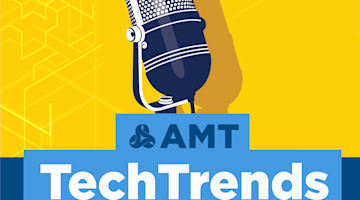On Aug. 20, 2019, the Materials Processing Equipment Technical Advisory Committee (MPETAC) met to discuss the latest matters in export control. The purpose of this committee is to advise the Office of the Assistant Secretary for Export Administration on technical questions that affect the level of export controls applicable to materials processing equipment and related technology. MPETAC covers articles, materials, and suppliers of metalworking equipment, numerically controlled machine tools, and robots. One of the committee’s ongoing goals is to integrate the control definitions between the Export Administration Regulations (EAR) and International Traffic in Arms Regulations (ITAR).
The open session consisted entirely of a presentation by AMT’s Chief Knowledge Officer Patrick McGibbon. He opened his presentation by addressing the manufacturing downstream impact portrayed by the Manufacturers Alliance for Productivity and Innovation (MAPI). “For every dollar of domestic manufacturing value-added destined for manufactured goods for final demand, another $3.60 of value-added is generated elsewhere,” McGibbon said. Upon establishing the value of the manufacturing industry, he further substantiated this claim by showing how machinery manufacturing employment is on the rise alongside the GDP by manufacturing: the United States is right under 21 percent of the World GDP regarding top manufacturing value-added countries.
The machine tool market was introduced via AMT’s U.S. Manufacturing Technology Orders (USMTO) survey of vertical machining centers, horizontal machining centers, horizontal numerically controlled lathes, grinding machines, and electrical discharge machines (EDM). McGibbon briefly touched on U.S. imports of machine tools via Trade Data Monitor (TDM). He also discussed current trade issues, focusing on dumping, Section 232, and Section 301, and how they impact the manufacturing industry in the United States.
McGibbon then turned his attention to manufacturing sectors such as automotive, aerospace, medical, off-road, agriculture, construction, and energy and power generation. He provided an outlook for each industry sector and mentioned upcoming notable projects. To conclude his presentation, he spoke about transformative technologies such as additive manufacturing (AM) and its rapid rise in the industry. Along with AM, he expounded upon artificial intelligence (AI) as part of the future of advanced automation (robotics) and augmented reality (AR). The ubiquity of AI has grown significantly, from mobile check deposits and email inbox auto-sorting features, to, more recently, mobile assistants such as Apple’s Siri, Samsung’s Bixby, and Google’s Google Assistant. Manufacturing technology is on an upswing, and it is our privilege to embrace the field.
For more information on the Bureau of Industry and Security Technical Advisory Committees (TAC) including a schedule of meetings, visit: https://www.bis.doc.gov/.






